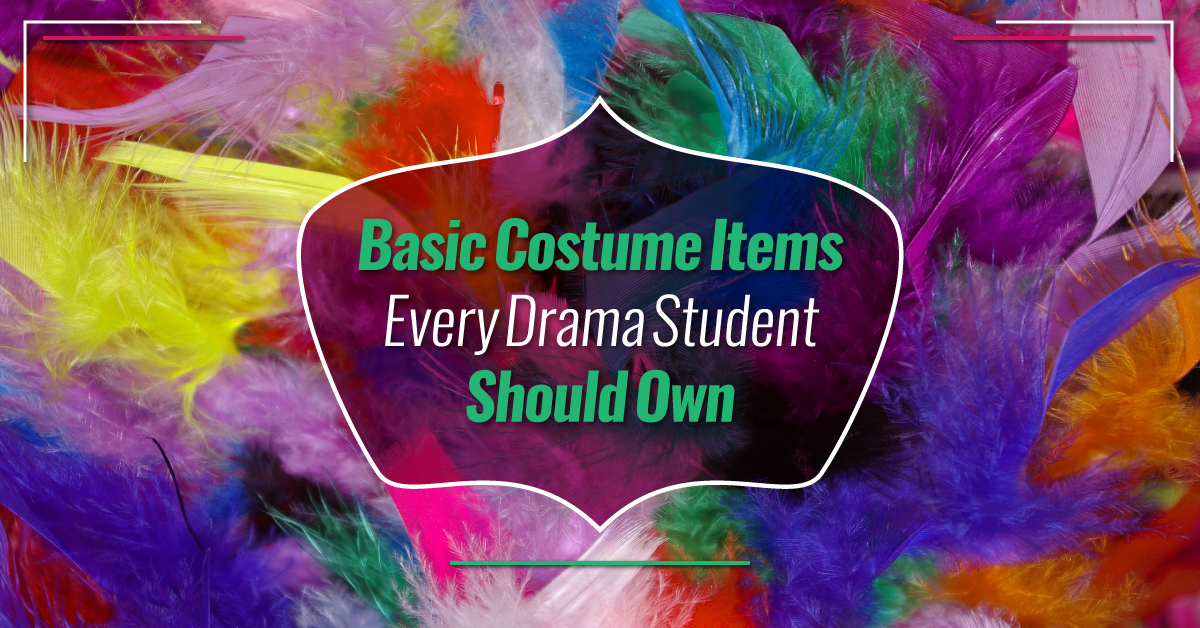A squirt gun would never be mistaken for a real gun, right? Dive into the thought-provoking world of Water. Gun. Argument and challenge what we choose to believe. A thought provoking and powerful piece in a docu-theatre style.
Costume Organization & Storage Tips
If you have been blessed with a huge costume inventory, ample storage space, and a head of wardrobe to keep tabs on everything, feel free to skip this article. For the rest of us, keeping our costume stocks in order can feel like a full-time job. Implementing some storage systems and being very specific about what costume items you keep in your inventory can help immensely with keeping you organized. Read on for some helpful tips!
1. Be specific about what you store.
No matter how large or small your storage area, there will always be a limit to the number of items you can store. Be aware of what you have in stock and reassess your inventory frequently. You’ll always be adding items as you do more shows, through purchases, donations, or sewing new pieces, so you’ll need to leave some room in your stocks for growth. A yearly purge can keep your storage space looking good.
If you’re having trouble deciding what to keep and what to get rid of, ask yourself these questions:
- Does the item need repairing? Are you actually going to take the time and effort to repair it? (If an item is beyond repair, get rid of it!)
- Can you replace the item for less than $20? Can you easily acquire the item at a thrift store?
- Do your students have something like it in their closets? (This could be a basic costume item drama students should own, or their own clothes for shows set in modern time periods.)
- Have you used it in the last five years?
- Are you likely to use it again or is it super specialized?
For the last question, think about items like the Enchanted Objects from Beauty and the Beast, or the full-company set of band uniforms from The Music Man. Those costume items may be oversized and difficult to store, or there may be a large quantity of the items that takes up a lot of precious storage space. However, if you anticipate being able to loan costume items to other schools, it may be worthwhile to keep certain items in your stocks.
Check out the bottom of this article for a free giveaway: Does It Stay or Does It Go?
2. Keep like items with like.
Rather than putting things away willy-nilly, separate your items in a way that makes sense. Store aprons in one box, neckties in another, shawls together. If you have a lot of items in a similar category, such as hats, break down your storage further — one box for baseball caps, one box for cowboy hats, one box for fascinators, and so on.
The same goes for hanging items. Put jackets with jackets, and gowns with gowns. Short-sleeved and long-sleeved shirts and blouses should be separate. How you organize items within each category is up to you. Some teachers like to separate items by colour; some prefer to put items of similar time periods together; some prefer to organize items by size. Whatever you decide, make sure that anyone who has access to the storage space (students, other teachers, volunteers, etc.) knows how to put things back properly.
3. Clear, labelled bins and hanging costume racks are your friends.
If your storage space allows, you’ll need two sections: one area for hanging items and one for bins and boxes. Items like gowns and jackets should be hung up, while items like t-shirts can be folded and stored in bins. A plastic rolling drawer unit is useful for small items such as jewellery, glasses and frames, and suspenders.
If your budget allows, invest in clear storage bins (much easier to see what’s inside) and sturdy, non-slip clothing hangers. A basic closet bar can suffice for hanging storage, but a rolling rack allows you to move items around more efficiently.
Label EVERYTHING. Labels can be as simple as a piece of painter’s tape on the front of a bin labelled with a marker. For hanging items, you can divide sections using paper plates — cut a circle in the centre of the plate, as well as a vertical slit from the outside edge of the plate to the centre, and pop it on the bar. Or, you can get fancy with a Cricut machine or similar. Just remember: no matter how fancy your labels are, they’re no good if people still don’t know where to find an item.
4. Be selective about receiving donations.
When you’re first building your costume inventory, you might be thrilled to receive donations from other schools, community theatre groups, dance companies, or families cleaning out their closets. However, there is no rule that says you have to keep everything.
It can take a lot of time to go through donation items, so make decisions as quickly as possible. Look back to the questions in section one when deciding what donations to keep. Immediately let go of items that are clearly the wrong size (for example, don’t keep child-sized items for a high school), items you already have duplicates of, and anything stained or dirty.
Bonus Tip: Put together a costume repair kit. A fishing tackle box is a good size. Add items like thread in various colours, sewing needles, scissors, safety pins, velcro, extra buttons, two-sided tape, a few measuring tapes, a seam ripper, and a stain remover pen.
Additional Resources:
Best Costuming Advice for a New Director
Common Costume Concerns
The Great Storage Struggle: What to Do With All That Stuff
Costume Care: Dos and Don’ts
How to Effectively Communicate With Rental Sources



